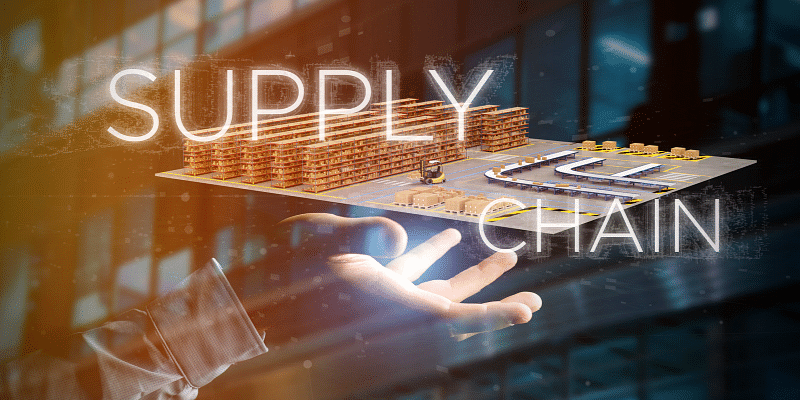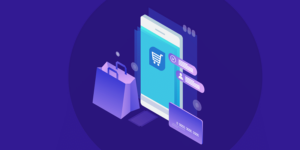The Indian cold supply chain industry is rapidly developing, especially post COVID, and has huge growth potential.
In 2021, the Indian cold chain logistics market was valued at $16 million; it is expected to reach $36 million by 2027. It is also estimated that by 2027, India will be world’s fifth largest economy and a key player in the global market, making its logistics infrastructure, including cold chain, significant.
However, the cold supply chain sector in India is highly fragmented at present and marred with severe challenges, including inefficient temperature control/monitoring and inadequate tech integration.
India is currently the world’s largest producer and consumer of dairy products and ranks #2 in the production of fruits and vegetables. In line with this, we produce more than 400 million metric tonnes of perishable food. But up to 40% of this is wasted due to an ineffective cold supply chain. According to the Associated Chamber of Commerce, our post-harvest losses amount to a whopping $14 billion! This has a direct impact on our economy and farmers even as the hunger problem prevails across the country.
Apart from perishable food, the pharma industry is another crucial sector where smooth functioning depends on an efficient cold supply chain network. From storage and transport to last mile, vaccines, life-saving drugs, and raw materials need a robust and well-managed cold supply chain network.
Technology can come to the rescue by offering promising solutions for all these challenges. Here are a few tech trends that are set to drive the sector in 2023:
1. IoT
IoT can potentially transform cold chains forever. By integrating IoT solutions into cold supply chains, logistics companies can consistently stay on top of every step in the storage and transportation processes, catalysing significant cost-optimizing benefits. Fleet managers could analyse and even toggle temperature settings on the go, accommodate for local climate changes, and unforeseen delays.
IoT solutions minimise human error and enable managers to take action on potential issues before they turn into major catastrophes. Integrating these with a centralised platform can further enhance efficiency, help cut losses, and bring transparency and control to the supply chain.
2. AI, ML, and Big Data
Artificial Intelligence and Machine Learning are helping provide end-to-end visibility into every cold chain function by processing massive volumes of live data. Data and predictive analysis can help address challenges in inventory management, stock control, quality testing, and pricing while also minimising human error. For example, AI and ML-based smart sensors can keep track of vehicle maintenance records to predict potential malfunctions on the evidence of historical data. This helps foresee temperature fluctuations and prevent incidents of truck breakdown.
Other benefits of AI and data-driven predictive analysis include route optimisation, inventory management, and prevention of occurrences of dangerous incidents in the warehouse, which could previously only be tracked and analysed after they had occurred.
3. Tech integration
Effective integration of AI, ML, IoT, and data-driven insights on a single platform could help build a seamless cold supply chain network that allows complete transparency and real-time tracking. Integration also offers 360° visibility into cold chain fleets, including KPIs such as capacity utilisation, driving speed, and idling times. This information transparency ensures optimum allocation of consignments, maximises capacity utilisation, and enhances cargo security.
Data-driven predictive analysis uses powerful algorithms which help reduce time and resource utilisation on performing repetitive but critical processes. Use cases for AI and ML are numerous and the trend will only pick up pace in 2023.
4. Blockchain
Blockchain offers a transparent and secure platform to manage and track inventory as it moves through the supply chain, and is fast becoming a preferred tech option for cold supply chain companies. Smart, digitally programmed contracts automatically enact or document relevant events when specific terms are met, offering a way for supply chain stakeholders to collaborate and share information (and money) more efficiently.
Given the significance of consistent temperature control and monitoring in cold supply chain networks, blockchain can prove to be a gamechanger. From building credibility and quality assurance to effectively identifying errors or inefficiencies in real time, blockchain is helping cold supply chain companies to enhance efficiency, improve customer experience, and drive better ROI.
Historically, the cold chain logistics industry has been technologically underserved. Tech adoption and automation would undoubtedly have to be at the forefront if we are to tackle the pain points.
The key tech trends mentioned above can accelerate the growth of the sector, but the need for huge investments in developing tech-enabled facilities continues to remain a challenge. The government’s plan to allow 100% FDI in logistics is a welcome step to secure such investments.
Going forward, tech integration coupled with favourable government policies would pave the way for a robust, optimised, and unbroken cold supply chain. In other words, for us to survive and grow as an economy, it is vital to embrace tech-enabled solutions to build an unbroken cold supply chain network.
Swarup Bose is the Co-Founder and CEO of Celcius Logistics.
(Disclaimer: The views and opinions expressed in this article are those of the author and do not necessarily reflect the views of YourStory.)










